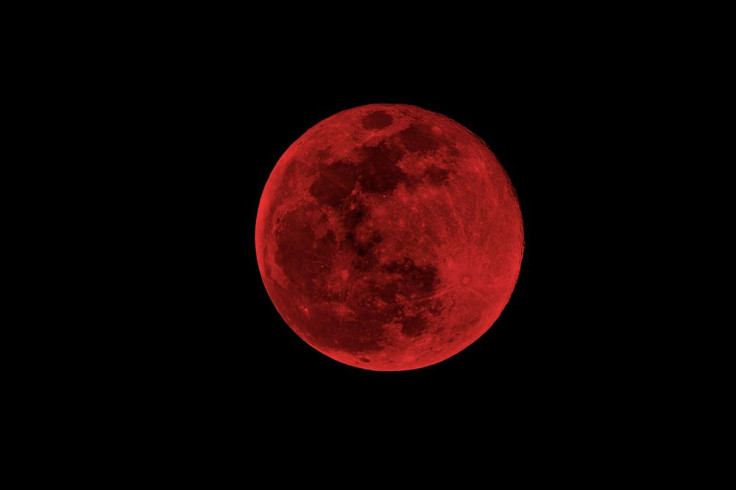
The next year and a half will feature four rare astronomical events during which the moon will change from white to shades of orange and red. The event, according to NASA, takes place when a total lunar eclipse -- when the moon passes through the Earth's shadow -- has shades of red. Due to the red shades, the moon is called the "blood moon" during this time.
How does an even that will take place four times be rare? While there are four upcoming blood moons -- April 15, 2014; Oct. 8, 2014; April 4, 2015, and Sept. 28, 2015 -- there has not been one in the past 300 years. Daily Mail reports that the blood moon will mark "the first time in 778 days, Mars, Earth and the sun aligned in an 'opposition of the planets.'"
“It's a projection of all the Earth's sunsets and sunrises onto the moon," said Noah Petro, Lunar Reconnaissance Orbiter deputy project scientist at NASA's Goddard Space Flight Center, in a statement. "It's a very subtle effect, and if any part of the moon is illuminated in the sun, you can't really see it."
If you want to see the first blood moon of the year, which will take place Tuesday, April 15, 2014, then know that location matters. Those who live in North and South America will be able to see the entire blood moon, which will be visible at 2 a.m. EDT (peaking at 3:45 a.m. EDT) and will last for three hours. But those living in Europe and Africa won't be catching a glimpse of the moon this time around due to the time.
"Sometimes they'll happen and you'll have to be somewhere else on Earth to see them," said Petro. "Most [residents] of the continental United States will be able to see the whole thing."
NASA will be hosting an online event during the blood moon, where NASA astronomer Mitzi Adams and astrophysicist Alphonse Sterling will answer questions on NASA’s website via webchat. The chat will begin on April 14 at 7 p.m. HST and continue through the end of the eclipse. You can access the chat at this link. Marshall Space Flight Center will be live streaming the eclipse via UStream, which you can watch below.
Video streaming by Ustream© 2024 Latin Times. All rights reserved. Do not reproduce without permission.
